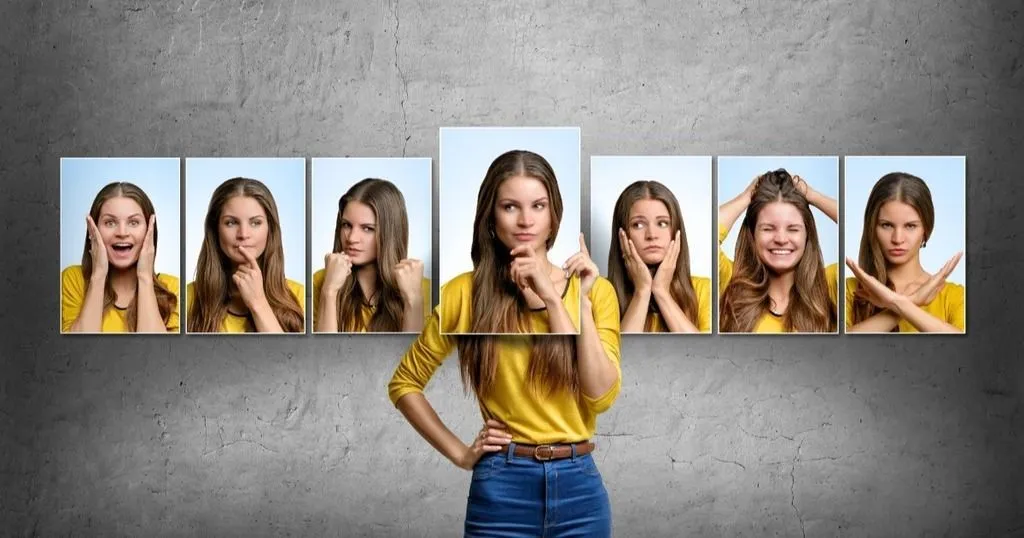Consumers' food choices and emotions
Is there a relationship between food choice and a person’s mood? Bartkiene et al. examined the factors that influence our food choice, using facial expression analysis.
Posted by
Published on
Thu 07 Nov. 2019
Topics
| Consumer Behavior | Emotions | FaceReader | Facial Expression Analysis |

If you ask me, the answer is “chocolate”! Eating a piece (or preferably a whole bar) of sweet chocolate will definitely change my mood positively. Therefore, I would choose that specific piece of food when I am feeling down. I believe that chocolate is the answer to everything.
Which food a person chooses to eat is influenced by many factors. Hunger is the most obvious one. However, not only physiological or nutritional needs determine what we choose.
What influences our food choices?
The research team of Prof. Dr. Elena Bartkiene from the Lithuanian University of Health Sciences focused their study on evaluating the connection between gender, age, and education level of consumers and their perception, emotional motivations, and knowledge about healthy eating. Additionally, they examined a possible relationship between food choice and a person’s mood in people with and without depressive disorder (DD).
Facial expression analysis to evaluate food induced emotions
Over 500 participants were involved in the study. The researchers used two methods to gather their data:
- A questionnaire to evaluate perceptions of healthy eating, sources of information about healthy diets, and emotional motivations associated with food choices and eating practices
- FaceReader software to evaluate possible differences in food induced expressions
The latter method was performed with 80 participants. Participants were divided into two groups: people diagnosed with DD and a control group not diagnosed with a mental disorder for at least a 1-year period.
During the tests, which took place in the morning (after 8 hours of fasting), different food tastes (sweet, salty, bitter, sour, and neutral) were presented. The sessions were recorded with MediaRecorder.
Additionally, the researcher used the 9-point Hedonic Scale (ranging from like extremely to dislike extremely) to measure whether the food tastes were liked or not.
FREE WHITE PAPER: FaceReader methodology
Download the free FaceReader methodology note to learn more about facial expression analysis theory.
- How FaceReader works
- More about the calibration
- Insight in quality of analysis & output
The role of gender when choosing food
Everyone knows that healthy eating is important. It ensures that your body functions well and that you feel fit. A good diet therefore increases the quality of life. The government, food companies, general practitioners, and many others, inform us about healthy food.
The results of the research of Bartkiene et al. showed that gender has a significant influence on the selection of sources of information about a healthy diet: according to questionnaire data, males obtained information from television and books more ‘sporadically’ than females. In contrast, females gather information from these resources more consciously and frequently.
The team also found that gender does not influence consumer perceptions about healthy eating. However, female participants did agree more than male participants did when they were asked whether food helped them cope with stress, if food could serve as emotional consolation, and whether they craved more sweets when depressed.
On the other hand, men reported associations between job stress, drinking status, and unhealthy eating patterns. Women seem to be more aware of and attentive to their emotions and are determined to change them.
The ‘food-mood’ link
Mood and food are sometimes linked. Different foods induce different emotions, and consumers choose foods depending on their mood.
In this study, age was found to be a significant factor for the ‘food–mood’ association of participants. The older persons were more likely to report positive emotions after having eaten their favorite comfort food. Comfort foods have a high calorie content and tend to be associated with childhood and/or home cooking, often prepared in a simple or traditional style. It makes us feel sentimental, reminding us of home, family, and friends.
To examine the impact of education on emotional motivations and perceptions about healthy eating, the researcher asked the participants questions about the role of food regarding aspects such as weight control, feeling depressed or alone, costs, traditions, and desire for sweets. For most of the analyzed emotional motivations, participants’ education level had a significant influence.
In the video below, Prof. dr. Susan Duncan from Virginia Tech explains that her research focuses on the role of sensory evaluation. With the help of FaceReader, she can capture how people are responding emotionally to products.
Relationship between food choice and emotions
Regarding the sweet, sour and salty tastes, it was found that persons with DD expressed less ‘happy’ emotions compared to the control group. While eating food with a bitter taste, persons with DD expressed lower ‘neutral’ and ‘contempt’ emotions. Higher ‘sad’ and lower ‘contempt’ expressions were observed in persons with DD for a neutral taste.
Mood has a strong link with the choice of food
The results of the study showed that expressions induced by different food tastes vary when comparing healthy people with people suffering from DD.
The research team conclude that many factors are of high importance in the analysis of food choices. They state: “The results obtained using FaceReader are very promising and sufficiently accurate to detect differences in facial emotion expressions induced by different tastes of food for different mood groups (with and without DD).”
References
Bartkiene, E.; Steibliene, V.: Adomaitiene, V.; Juodeikiene, G.; Cernauskas, D.; Lele, V.; Klupsaite, D.; Zadeike, D.; Jarutiene, L. & Guiné, R.P.F. (2019). Factors Affecting Consumer Food Preferences: Food Taste and Depression-Based Evoked Emotional Expressions with the Use of Face Reading Technology. BioMed Research International, 4, 1-10. DOI: 10.1155/2019/2097415
Related Posts

5 tips on how to measure facial expressions

Why you want to find out if your customers are bored
